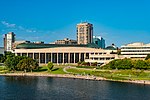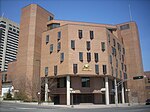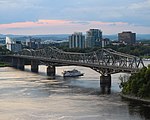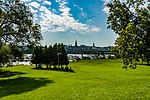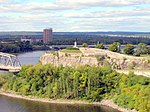The Queen's Beasts

The Queen's Beasts are ten heraldic statues representing the genealogy of Queen Elizabeth II, depicted as the Royal supporters of England. They stood in front of the temporary western annexe to Westminster Abbey for the Queen's coronation in 1953. Each of the Queen's Beasts consists of a heraldic beast supporting a shield bearing a badge or arms of a family associated with the ancestry of Queen Elizabeth II. They were commissioned by the British Ministry of Works from the sculptor James Woodford, who was paid the sum of £2,750 for the work. They were uncoloured except for their shields at the coronation. They are now on display in the Canadian Museum of History in Gatineau, Quebec. The original models are the King's Beasts which survive at Hampton Court Palace near London, sculpted in stone for King Henry VIII (1509–1547) and his third wife Jane Seymour. Copies survive at nearby Kew Gardens. In the 1920s a set of 76 similar heraldic beasts was replaced on the roof of St George's Chapel, Windsor Castle, having been taken down in 1682 due to dilapidation.
Excerpt from the Wikipedia article The Queen's Beasts (License: CC BY-SA 3.0, Authors, Images).The Queen's Beasts
Rue Laurier, Gatineau Hull
Geographical coordinates (GPS) Address Nearby Places Show on map
Geographical coordinates (GPS)
| Latitude | Longitude |
|---|---|
| N 45.430558 ° | E -75.708907 ° |
Address
Édifice de la muséologie du MCH
Rue Laurier 120
J8X 3W2 Gatineau, Hull
Quebec, Canada
Open on Google Maps

